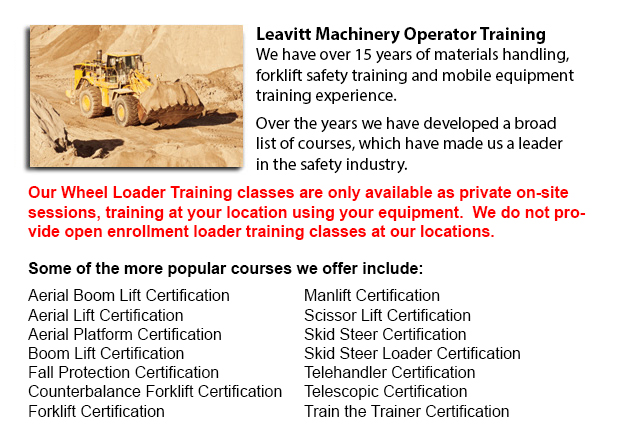
Lift trucks are accessible in a variety of other models which have various load capacities. Most typical lift trucks utilized inside warehouse environment have load capacities of 1-5 tons. Bigger scale units are utilized for heavier loads, like for instance loading shipping containers, could have up to 50 tons lift capacity.
The operator could make use of a control to be able to raise and lower the tines, that are likewise known as "tines or forks." The operator can even tilt the mast in order to compensate for a heavy load's tendency to tilt the blades downward to the ground. Tilt provides an ability to work on bumpy surface as well. There are annual contests meant for skillful lift truck operators to contend in timed challenges and obstacle courses at local lift truck rodeo events.
General operations
Lift trucks are safety rated for loads at a specific maximum weight as well as a specific forward center of gravity. This essential information is provided by the manufacturer and located on a nameplate. It is important loads do not go beyond these details. It is prohibited in numerous jurisdictions to tamper with or remove the nameplate without getting consent from the lift truck maker.
Most forklifts have rear-wheel steering in order to enhance maneuverability inside tight cornering conditions and confined spaces. This particular kind of steering differs from a drivers' initial experience along with various vehicles. Because there is no caster action while steering, it is no necessary to use steering force in order to maintain a continuous rate of turn.
Instability is one more unique characteristic of forklift use. A constantly varying centre of gravity occurs with each movement of the load amid the forklift and the load and they should be considered a unit during operation. A forklift with a raised load has centrifugal and gravitational forces which can converge to cause a disastrous tipping mishap. So as to prevent this possibility, a lift truck must never negotiate a turn at speed with its load elevated.
Forklifts are carefully built with a cargo limit for the tines. This limit is lessened with undercutting of the load, which means the load does not butt against the fork "L," and likewise lowers with fork elevation. Normally, a loading plate to consult for loading reference is positioned on the forklift. It is unsafe to make use of a lift truck as a worker hoist without first fitting it with certain safety tools like for instance a "cage" or "cherry picker."
Lift truck utilize in distribution centers and warehouses
Vital for every distribution center or warehouse, the lift truck needs to have a safe environment in which to accommodate their safe and efficient movement. With Drive-In/Drive-Thru Racking, a forklift needs to go in a storage bay which is multiple pallet positions deep to set down or obtain a pallet. Operators are normally guided into the bay through rails on the floor and the pallet is located on cantilevered arms or rails. These tight manoeuvres need expert operators in order to complete the job efficiently and safely. For the reason that each and every pallet requires the truck to enter the storage structure, damage done here is more frequent than with other kinds of storage. Whenever designing a drive-in system, considering the dimensions of the tine truck, including overall width and mast width, must be well thought out in order to be sure all aspects of an effective and safe storage facility.
-
Aerial Lift Train the Trainer Glendale
Aerial Lift Train the Trainer Glendale - The Aerial Lifts Train the Trainer Certification Program will teach trainers how to effectively train operators in safe industrial mobile machine operation. Trainers are given in-depth instruction on aerial li... More -
Forklift License Glendale
Forklift License Glendale - In North America, acquiring a forklift license or forklift certification involves hands-on and classroom training. Regulatory control over certification, training and license for powered industrial truck operators falls un... More -
Telehandler Certification Glendale
Telehandler Certification Glendale - Telehandler certification programs are both for operators who have some experience driving a typical forklift and for individuals with no experience. The real-world training provided by these courses produces grad... More -
Operator Safety Training and Re-Qualification Training and In-House Instructor Training in Glendale
Forklifts are used in almost all warehouse operations and in boat yards and in industrial construction sites. The reach feature of a forklift is a very important component utilized in a variety of applications like for example when a shelving system... More -
Manlift Training Glendale
Manlift Training Glendale - Different manlift training programs include the content and review of manlift devices. An important portion of the program is the practicum where students show their practical ability and knowledge to safely operate a manl... More -
Crane Certification Glendale
Crane Certification Glendale - The Crane Certification Program consists of the industry suggested subject matter which will teach the safe and efficient operation of cranes. The individual would train in the following: how to identify cranes and thei... More -
Loader Ticket Glendale
Loader Ticket Glendale - Gehl articulated loaders have been made to suit practically every condition. They offer optimal maneuverability and great traction due to a heavy-duty oscillating joint that provides 45-degree rotating angles right and left,... More -
Crane Ticket Glendale
Crane Ticket Glendale - The new version of a crane could be either simple or complex, and cranes vary based on their use. Mobile cranes, for instance are rather simple. A telescopic boom or steel truss mounts its movable platform. A system of levers... More

Forklift Training Glendale
TOLL FREE: 1-888-254-6157
Glendale, Arizona
forkliftcertificationglendale.com
Email Us
About Us


